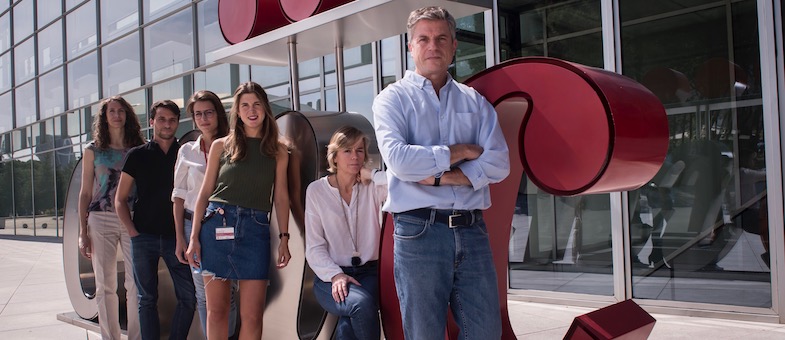Developmental Cell: A ‘social control’ system guarantees embryonic stem cell purity
This control mechanism is important for pluripotency in the development of mammalian embryos
A sophisticated system of ‘social control’ operating between neighboring cells allows embryos to protect the purity of their pluripotent cell population, which is able to generate all body tissues. This system works through the elimination of cells that begin to differentiate prematurely, in a process mediated through ‘cell competition’ based on the expression levels of the gene Myc. This control system is important for pluripotency during the development of mammalian embryos, and is described for the first time in Developmental Cell by researchers at the Centro Nacional de Investigaciones Cardiovasculares (CNIC).
When mammalian embryos contain no more than a few dozen cells, some of these cells have the capacity to differentiate into all the cell types of the organism. This capacity is known as pluripotency, and study leader Dr. Miguel Torres explained that at these early stages the embryo must conserve and expand the pluripotent cell population over a period of days in order to produce several thousand pluripotent cells, enough to generate a new individual organism. During this process, cells progress from a naive state (more pluripotent) to a primed state, in which they have a greater propensity to differentiate.
Until now, scientists have had no way to explain why this expansion in the numbers of pluripotent cells is accompanied by the spontaneous death of large numbers of these same cells. What was known is that neighboring pluripotent cells compare their levels of a factor called Myc, which controls cells’ ability to grow and proliferate. Cells with less Myc than their neighbors die through a process known as cell competition; however, it was unknown why the pluripotent cell population in the embryo contains cells with different levels of Myc.
For the new study, a multidisciplinary team at the CNIC used pluripotent cells in which the levels of Myc are revealed by a fluorescent signal. The team also developed a novel image analysis tool that allowed them to film groups of live pluripotent cells. By tracking the level of Myc in these populations, the scientists were able to observe which cells become ‘losers’ in cell competition and die, and which ones become ‘winners’ and survive. The fluorescent signal also allowed the team to isolate cells with high or low Myc levels and study their characteristics. As Dr. Torres explained, “the study shows that the level of Myc reveals the differentiation state of the cell; cells with more Myc are more naive, in other words more pluripotent, whereas those with less Myc are more primed, or more differentiated.”
Cell competition
What this discovery implies is that the pluripotent stem cell population is not pure, due to the appearance of primed cells with lower levels of Myc. Interestingly, when the cells divide, the daughter cells show a very strong tendency to conserve the Myc level and the differentiation state of the mother cell. So when the research team blocked cell competition, they found that differentiated cells accumulated in the pluripotent stem cell population. In other words, the pluripotent stem cell population became less pure when primed cells could not be eliminated through cell competition.
The scientists also made the following fascinating discovery. Once the embryo has accumulated enough pluripotent cells to generate a new individual, these cells need to start differentiating. The research team found that at this stage entire cell populations reduce their levels of Myc simultaneously, thus avoiding death by cell competition and initiating a coordinated process of differentiation. The conclusions reached by first author Covadonga Díaz-Díaz and colleagues establish that cell competition based on differential Myc levels among neighboring cells acts as ‘social control’ system, through which embryos protect the purity of the pluripotent stem cell population by eliminating cells that begin to differentiate prematurely.
According to the researchers, these results also reveal the yin and yang action of genes such as Myc. “The ability of Myc to regulate cell growth and proliferation is essential for embryonic development, but this same capacity means that excessive Myc expression in the cells of adults is one of the main causes of cancer.”
Díaz-Díaz, C., Fernandez de Manuel, L., Jimenez-Carretero, D., Montoya, M. C., Clavería, C., & Torres, M. Pluripotency Surveillance by Myc-Driven Competitive Elimination of Differentiating Cells. Developmental Cell. doi:10.1016/j.devcel.2017.08.011
FREE VERSION OF THE ARTICLE: Anyone who clicks on the link until November 14, 2017, will be taken to the final version of your article on ScienceDirect for free. No sign up or registration is needed - just click and read!
PREVIEWS: Status Anxiety among Pluripotent Stem Cells? Thomas P. Zwaka - Developmental Cell











